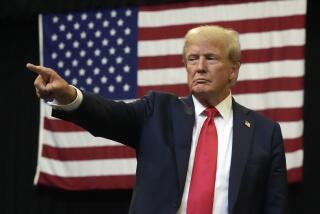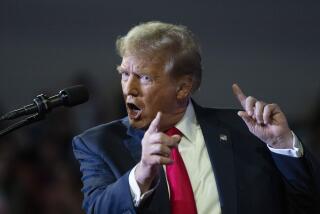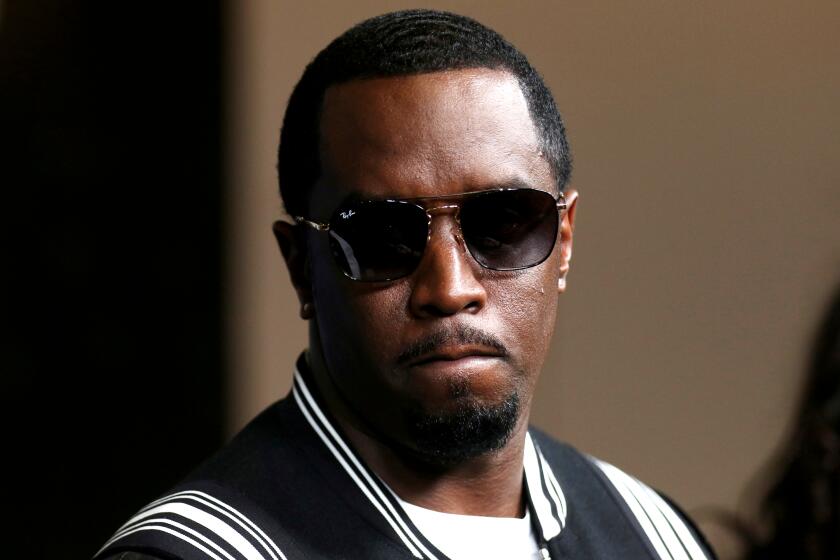Editorial: Trump’s ‘new’ Afghanistan policy is more of the same

When President Trump took office, he wanted to withdraw from Afghanistan. Yesterday, he announced that he’s changed his mind. (Aug. 22, 2017)
Candidate Donald Trump once called U.S. military involvement in Afghanistan a “total disaster.” Now president, Trump told the nation on Monday that, after studying the issue, he had reconsidered his original instinct to pull U.S. forces out of that country.
Administration officials say he has approved a plan to send thousands more American trainers, advisors and specialists to Afghanistan to deal with a resurgent Taliban and other violent groups, including Islamic State.
The president’s second thoughts may be warranted, but we understand why it took him so long to accede to his advisors’ recommendation. U.S. involvement in Afghanistan has dragged on for far too long, and the government it helped erect now controls little more than half of the nation’s districts.
In a nationally televised speech, Trump said that U.S. strategy under his leadership will change dramatically. Yet despite the new packaging and more muscular rhetoric, much of the policy he outlined seems like more of the same: using U.S. forces to prevent the Taliban and other insurgent groups from toppling the U.S.-supported government, but with no guarantee of either a decisive victory or military gains significant enough to bring the Taliban to the negotiating table.
It’s depressing that 16 years after the U.S. intervened in Afghanistan, the Taliban is not only still alive, but ascendant.
This doesn’t mean Trump is making the wrong decision or that he should revert to the glib advice he offered as a private citizen in a 2013 tweet: “We have wasted an enormous amount of blood and treasure in Afghanistan. Their government has zero appreciation. Let’s get out!”
Much as the U.S. may wish that the Afghan military and police forces were able to neutralize the Taliban without outside assistance, a hasty withdrawal would, as Trump recognized, create a security crisis for the Afghan government — and increase the possibility that the country again would become a haven for terrorists who would export violence to the U.S. That’s the very problem that drew the U.S.-led coalition into war in Afghanistan in the first place.
Trump has decisively rejected a total withdrawal. He also has properly rebuffed hare-brained suggestions — advanced by former strategist Steve Bannon — that he entrust much of the U.S. military mission in Afghanistan to private contractors. Instead, the U.S. will use American troops — to be increased from 8,400 to approximately 12,000 — to train and assist Afghan forces while pressing Pakistan to deny shelter to fighters from the Taliban and the Haqqani network.
In its broad outlines, the policy announced by Trump is not very different from that pursued by President Obama at the end of his administration. Obama originally had hoped to reduce the number of U.S. troops to about a thousand, stationed at the U.S. embassy in Kabul. But on the recommendation of his military advisors, he twice modified planned troop reductions to leave more Americans in deployment.
One arguably new element was Trump’s suggestion that he would put pressure on Pakistan to stop providing a safe haven for the Taliban and associated groups. Noting that the U.S. has been paying Pakistan billions of dollars, he said that country had much to lose if it continued to harbor terrorists. He also suggested that, unlike the Obama administration, his goal in Afghanistan was to kill terrorists, not engage in nation-building. (That is actually less of a distinction between the two administration’s policies than Trump suggests.)
Finally, Trump suggested that the U.S. was open to the idea of peace negotiations in the future with elements of the Taliban. But in the meantime, Trump has concluded, as President Obama did before him, that the U.S. must continue to be engaged militarily in Afghanistan. Even if that is the least bad decision, it’s depressing that 16 years after the U.S. intervened in Afghanistan in the wake of the Sept. 11 terrorist attacks — at an eventual cost of 2,400 American lives — the Taliban is not only still alive but ascendant, corruption remains rife, and political consensus seems elusive.
Given the alternative, Trump is right to try to stabilize the situation in Afghanistan. But it’s hard to be optimistic about where that will lead.
Follow the Opinion section on Twitter @latimesopinionand Facebook
More to Read
A cure for the common opinion
Get thought-provoking perspectives with our weekly newsletter.
You may occasionally receive promotional content from the Los Angeles Times.










